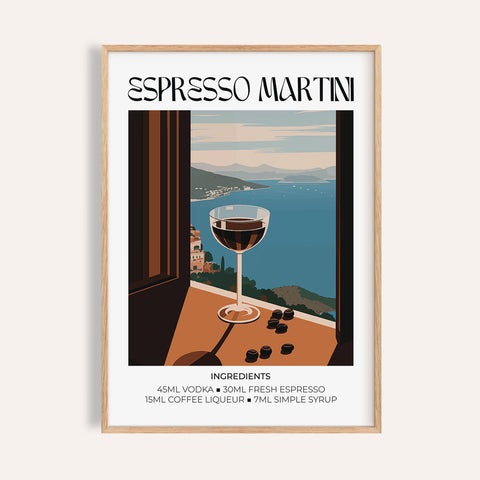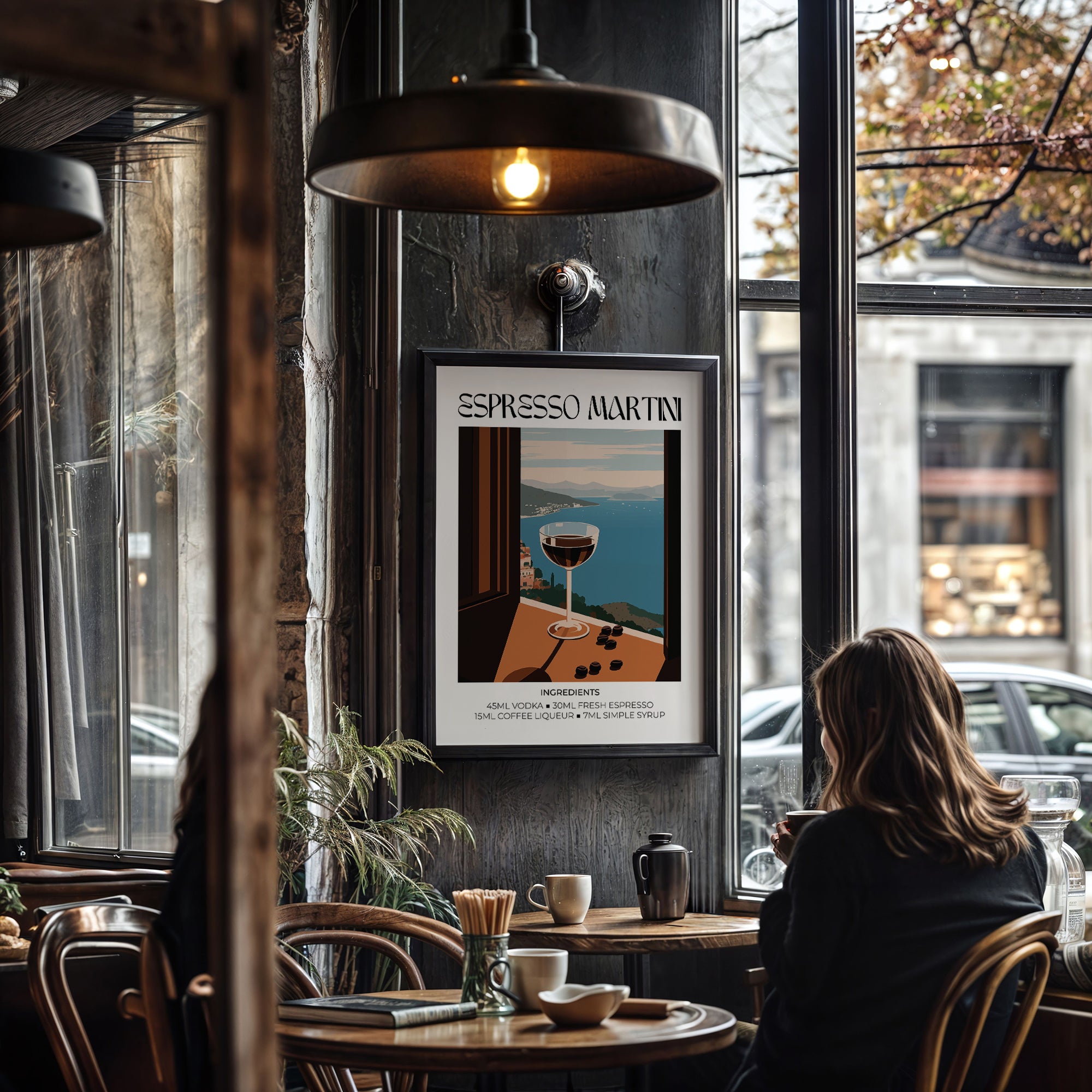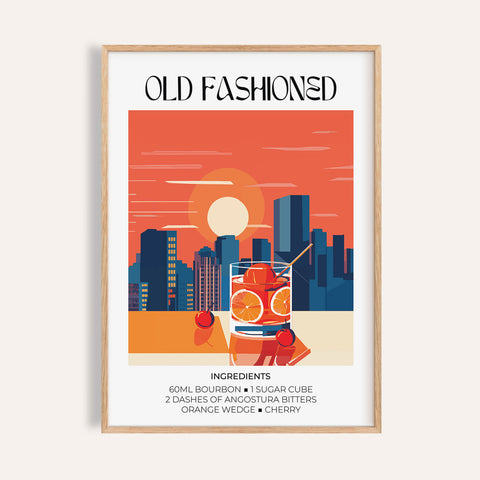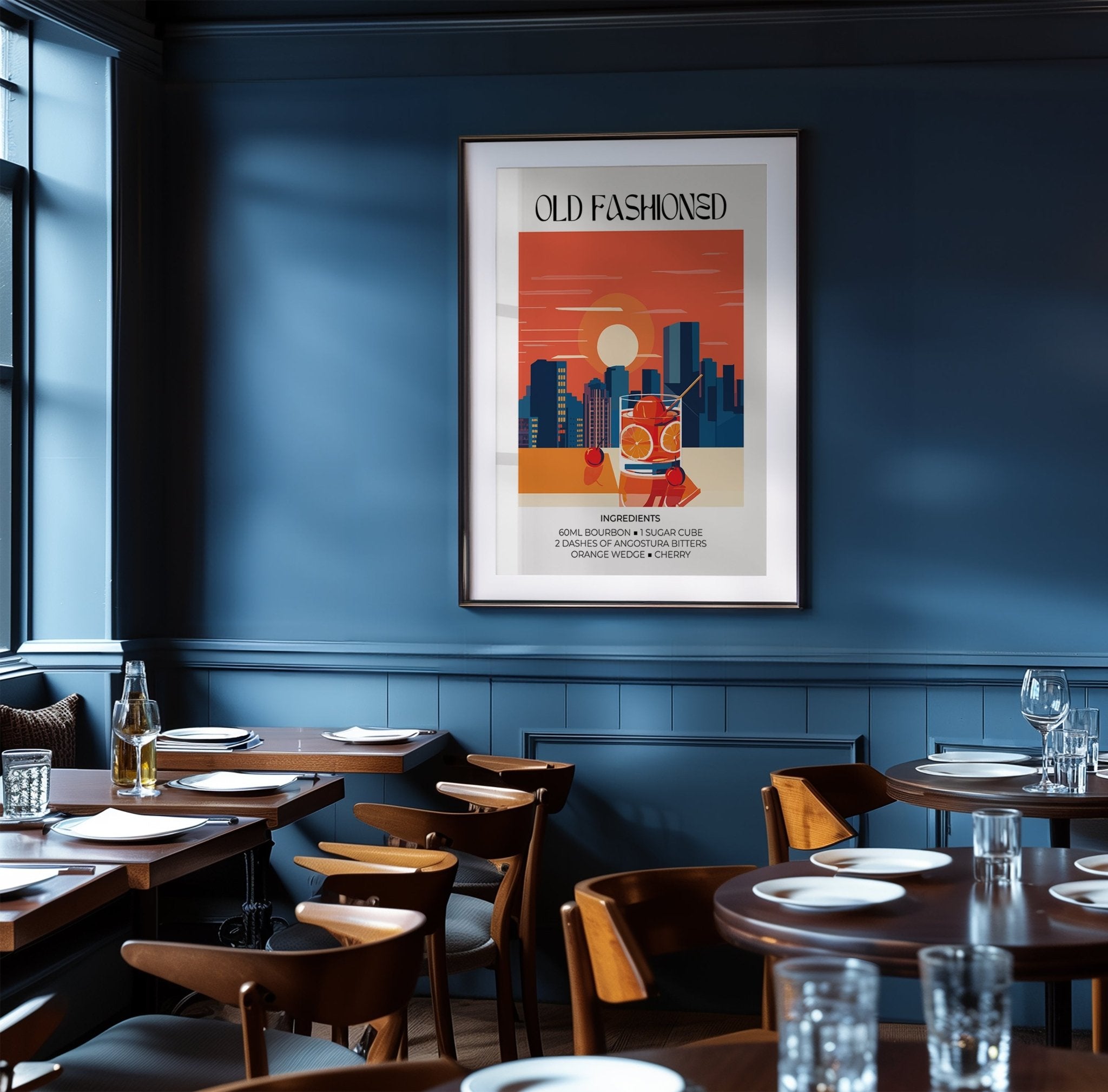
Art Prints and Posters
Explore our wall art prints including Bauhaus, Yayoi Kusama, and modern styles. These high-quality, eco-conscious prints add personality and design clarity to any interior.














Discover our extensive collection of living room wall art prints, featuring timeless Bauhaus posters, iconic Yayoi Kusama art prints, and contemporary designs. Perfect for adding style and personality to your space, our high-quality, eco-friendly prints suit every interior aesthetic.
Fr... Read More
Discover our extensive collection of living room wall art prints, featuring timeless Bauhaus posters, iconic Yayoi Kusama art prints, and contemporary designs. Perfect for adding style and personality to your space, our high-quality, eco-friendly prints suit every interior aesthetic.
From minimalist Bauhaus art prints to vibrant Yayoi Kusama art posters, each piece is carefully curated to enhance your home with unique artistic flair. Whether you're decorating a modern living room, a cosy reading nook, or a stylish home office, our selection of living room wall art prints offers inspiring options to transform your space.
Looking for related styles? Explore:
- Bauhaus Art Posters – Bold geometric designs inspired by the legendary Bauhaus movement.
- Yayoi Kusama Art Prints – Explore Kusama’s iconic dots, patterns, and vibrant colours.
- Living Room Wall Art – Discover prints that bring elegance and creativity to your decor.
Best Sellers in This Collection:
- Dotted Peaks – A stunning statement piece perfect for modern interiors.
- Dandelion Serenity – A customer favourite with bold, timeless appeal.
Bring creativity and elegance to your walls with stunning living room wall art prints that blend modern design with timeless inspiration. Shop now to transform your living room into a stylish and artistic space!
Read Less
Frequently Asked Questions
- When selecting art prints to enhance your living space, a variety of sizes are available to suit your specific needs and style preferences. Whether you're looking to fill a small nook or make a bold statement on an expansive wall, here are the popular dimensions to consider:
Centimeter Sizes:
- 30 x 40 cm: A perfect choice for smaller areas or when you wish to create a more intimate display.
- 50 x 50 cm: Offers a symmetrical square option, ideal for gallery walls.
- 70 x 70 cm: Another square option that provides a balanced, eye-catching appeal.
- 75 x 100 cm or A0: A large canvas that can dominate a room or act as a focal point.
Inch Sizes:
- 18 x 24 inches: A versatile standard frame size, fitting for casual or formal settings.
- 24 x 36 inches: Offers a larger presence which is well-suited for impactful visuals or detailed artworks.
With these size choices, you have the flexibility to select the perfect art print scale that complements your environment while reflecting your personal style.
Explore a Spectrum of Color Filters for Art Prints
When searching for art prints, applying color filters can significantly enhance your shopping experience by helping you find pieces that seamlessly fit your decor. Here's a comprehensive list of hues you can consider:
Monochromes: Dive into the timeless elegance of Black & White, or choose individual shades like Black and White to create a striking contrast.
Blues & Greens: Opt for the calming tones of Blue or Green, and explore vibrant Cyan for a touch of energy.
Warm Tones: Brighten your space with colors like Yellow, Orange, and Red, perfect for creating a welcoming atmosphere.
Cool Hues: Introduce tranquility with shades like Purple and Grey, adding depth and sophistication.
Pops of Color: Make a statement with Pink or opt for understated elegance with Beige and Brown.
Eclectic Choices: For those who love variety, select Multi-colored prints that bring a kaleidoscope of tones into your environment.
Each of these color filters can transform your search, guiding you toward art prints that not only reflect your personality but also complement your space beautifully.
How to Sort the Collection of Art Prints
When navigating a collection of art prints, it's crucial to find an organization method that suits your needs. Here's how you can sort through the options to zero in on what you're looking for:
Highlight Picks First: Discover popular or recommended prints by viewing items that are prominently featured.
Popularity at a Glance: See what others are purchasing by ordering prints from best-selling to less popular choices.
Alphabetical Order: Whether you're looking for a specific artist or style, sort prints alphabetically for quick access. Start from A-Z or reverse it for a twist.
Price Range Check: Find pieces within your budget by sorting from the most affordable options to the more luxurious, or vice versa if you're opting for premium selections.
Chronological Order: For those interested in the latest creations or wanting a historical perspective, arrange prints by their release date—newest to oldest, or the other way around.
This adaptable approach ensures you can efficiently navigate through hundreds or even thousands of art prints to find the perfect piece for your collection or as a gift.
Unframed Art Prints: A Flexible Choice
Absolutely, you can indeed purchase art prints without a frame. All our prints are unframed prints, giving you the freedom to choose your own framing style later.
Why Choose Unframed Prints?
Cost-Effective: Unframed prints are often less expensive, allowing you to allocate funds for custom framing.
Personalization: You have the flexibility to select a frame that perfectly matches your décor or personal taste.
Versatility: Without a frame, prints are easier to store, ship, and handle, making them a practical option for collectors.
When purchasing unframed prints, you gain the creative liberty to craft an aesthetic that truly speaks to your individual style. Whether you plan to display them as they are or adorn them with ornate frames, the choice is entirely yours.
Special Offer on Posters
Absolutely! There's an incredible deal when you purchase more than one poster. Here's how it works:
Initial Discount: All products, including posters, are already reduced by 20%.
Additional Savings: You can score an EXTRA 10% off on the second poster and an EXTRA 15% off when you buy a third poster or more. No need for a discount code.
Stack these discounts for maximum savings and refresh your space with stunning new designs.
Wooden Frames
Oakwood: Available in natural, black, dark, and white finishes, oakwood frames offer a classic and timeless look. They can complement a variety of interior designs while highlighting the artwork elegantly.
Colored Frames
Add a splash of color to your walls with these vibrant frame choices:
Colors Include: Purple, red, orange, yellow, mint, green, blue, petrol, pink, and taupe. These options are perfect for adding a playful or thematic touch to your space, matching the ambiance of the room.
Aluminium Frames
Black: For a sleek, modern appeal, black aluminum frames provide a minimalist and contemporary vibe. They are durable and provide a stark contrast to colorful or bright art prints.
Frameless Option
None: If you prefer your artwork to remain the focal point without any distractions, opting for no frame is a clean and minimalist approach. This choice allows the art itself to stand out, giving it a floating effect on the wall.
These diverse framing options ensure you can find the perfect fit for any artwork, enhancing its appearance and harmonizing with your home decor.
Wooden Frames
Oakwood: Offers a classic and natural look that's warm and inviting.
Colored Frames
These frames provide a pop of color and can enhance the vibrancy of your artwork.
Color options include: Purple, Red, Orange, Yellow, Mint, Green, Blue, Petrol, Pink, and Taupe.
Aluminium Frames
For a sleek and modern aesthetic, aluminium frames are a timeless choice.
Frameless Option
For those who prefer a minimalist approach, displaying your artwork without a frame is also an option.
With these varied materials and finishes, you can easily find the perfect frame to complement your artwork and personal style.
Art Prints and Posters
When selecting art prints and posters, it's important to consider the format options available to best suit your space and aesthetic preferences. Here are the standard formats you can choose from:
Portrait (Vertical): Ideal for pieces that emphasize height, such as full-length portraits or tall architectural scenes.
Landscape (Horizontal): Perfect for wide vistas, panoramic views, and compositions that benefit from a broader perspective.
Square: A versatile choice that adds a modern touch and works well with symmetrical compositions or when you want to create a balanced gallery wall.
These formats allow you to tailor your art selections perfectly to your environment, ensuring that each piece complements your home or office decor beautifully.
Current Discounts and Promotions
Good news! There's a fantastic Spring Sale happening right now with great savings available:
20% Discount: You automatically receive this discount on everything. No need for any extra steps—just shop and save.
Extra Savings on Posters: Purchase a second poster and enjoy an additional 10% off your total. Purchase a third poster or more and enjoy an additional 15% off your total.
This sale is a perfect opportunity to refresh your space with new artwork and home decor. Get ready to shop these amazing deals!
Art Prints and Posters
Explore a diverse world of art prints and posters, each designed to captivate and inspire. Whether you're looking for something specific or browsing for new ideas, our categories have something for everyone.
Orientation and Format
Horizontal
Vertical
Square
Art Styles and Themes
Abstract: Dive into the world of colors and shapes with our abstract collection.
Architecture & Bauhaus: Perfect for lovers of structure and modernist aesthetics.
Floral & Nature: Bring nature indoors with vibrant and soothing botanical prints.
Minimalistic: Clean lines and simple designs for a modern look.
Japandi & Ukiyo-e Art: Experience the elegance of Japanese and Scandinavian fusion.
Color and Technique
Black & White: Timeless classics that fit any decor.
Colorful: Brighten up your space with vibrant hues.
Subject Matter
Food & Cocktails: Celebrate everyday beauty with prints that focus on life's simple pleasures.
Cats & Paws: Perfect for animal lovers of all kinds.
Whether you're decorating a new space or looking to add a touch of personality to your home, our extensive collection ensures you'll find the perfect art print to suit your taste.
The History of Art Prints
Art prints have a rich and fascinating history that spans centuries, evolving alongside technological innovations and artistic movements. From ancient techniques to modern digital processes, the development of printmaking has democratized art and expanded its reach across cultures and societies.
Origins and Early Development
Ancient Beginnings: The earliest forms of printmaking date back to ancient civilizations, with evidence of stamped designs found in Mesopotamia around 3000 BCE. Ancient Egyptians and Chinese also used stamps for decorative purposes and text reproduction.
Woodblock Printing: Developed in China during the Han Dynasty (206 BCE–220 CE), this technique involved carving images into wooden blocks, applying ink, and pressing them onto paper or fabric. By the 8th century, woodblock printing was widely used in East Asia for reproducing Buddhist texts and later for artistic images.
Paper Revolution: The invention and spread of papermaking from China to the Islamic world and eventually to Europe by the 12th century created an ideal medium for printmaking to flourish.
European Renaissance and Expansion
Woodcuts in Europe: By the early 15th century, European artists adopted woodcut techniques primarily for religious imagery and playing cards. These prints were often hand-colored after printing.
Engraving: Developed in the mid-15th century, metal engraving offered finer detail than woodcuts. Artists like Albrecht Dürer elevated this medium to high art with his masterful engravings that showcased unprecedented technical skill.
Gutenberg and Movable Type: Johannes Gutenberg's invention of movable type printing in the 1440s revolutionized the reproduction of text and eventually led to innovations in image printing as well.
Etching: Emerging in the late 15th century, etching used acid to cut into metal plates, offering artists a more fluid drawing style. Rembrandt van Rijn became a master of this technique in the 17th century, creating prints with remarkable tonal range.
17th-18th Century Developments
Mezzotint: Invented in the 17th century, this technique created rich, velvety blacks and was particularly suited for reproducing paintings.
Aquatint: Developed in the 1760s, aquatint allowed for tonal areas similar to watercolor washes, expanding the expressive possibilities of printmaking.
Color Printing: While hand-coloring prints was common, artists began developing methods for printing in multiple colors, with techniques like à la poupée (using different colored inks on a single plate) and multiple-plate color printing.
19th Century Innovations
Lithography: Invented by Alois Senefelder in 1796, lithography relied on the principle that oil and water repel each other. This technique allowed artists to draw directly on a stone with a greasy crayon, creating prints that closely resembled drawings. By the mid-19th century, chromolithography enabled vibrant color printing.
Photography and Photomechanical Processes: The invention of photography in the 1830s eventually led to photomechanical printing processes that transformed commercial printing and artistic reproduction.
Japanese Influence: The opening of Japan to the West in the 1850s introduced European artists to Japanese ukiyo-e woodblock prints, profoundly influencing Impressionists and Post-Impressionists and spurring renewed interest in printmaking as an art form.
20th Century Revolution
Artistic Experimentation: The 20th century saw artists pushing the boundaries of printmaking. Movements like German Expressionism embraced woodcuts for their raw, emotional quality, while Surrealists explored automatic techniques in etching and lithography.
Screen Printing: Though ancient in origin, screen printing (or serigraphy) gained prominence as an artistic medium in the mid-20th century. Pop artists like Andy Warhol famously used this technique to create iconic images of consumer culture and celebrities.
Digital Revolution: Beginning in the 1960s with early computer art, digital printmaking technologies developed rapidly by the end of the century, offering new possibilities for creating and reproducing images with unprecedented precision.
Contemporary Printmaking
Digital Prints: High-quality inkjet printing (giclée) has become a standard for art reproduction and original digital art creation, offering exceptional color accuracy and longevity.
Hybrid Approaches: Many contemporary artists combine traditional printmaking techniques with digital processes, creating innovative works that bridge historical methods with new technologies.
Democratization of Art: Digital printing technologies have made art prints more accessible than ever, allowing artists to self-publish their work and reach global audiences directly.
Fine Art Print Market: The market for limited edition fine art prints continues to thrive, with collectors valuing both traditional printmaking techniques and new digital approaches.
Throughout its history, printmaking has served dual purposes: as a medium for original artistic expression and as a means of reproducing and disseminating art. This duality has made prints essential to the democratization of visual culture, allowing artistic ideas to cross boundaries of class, geography, and time.
The evolution of art prints reflects humanity's constant innovation and desire to create and share visual expressions, making this medium not just a technique but a vital thread in our cultural fabric.



























































































